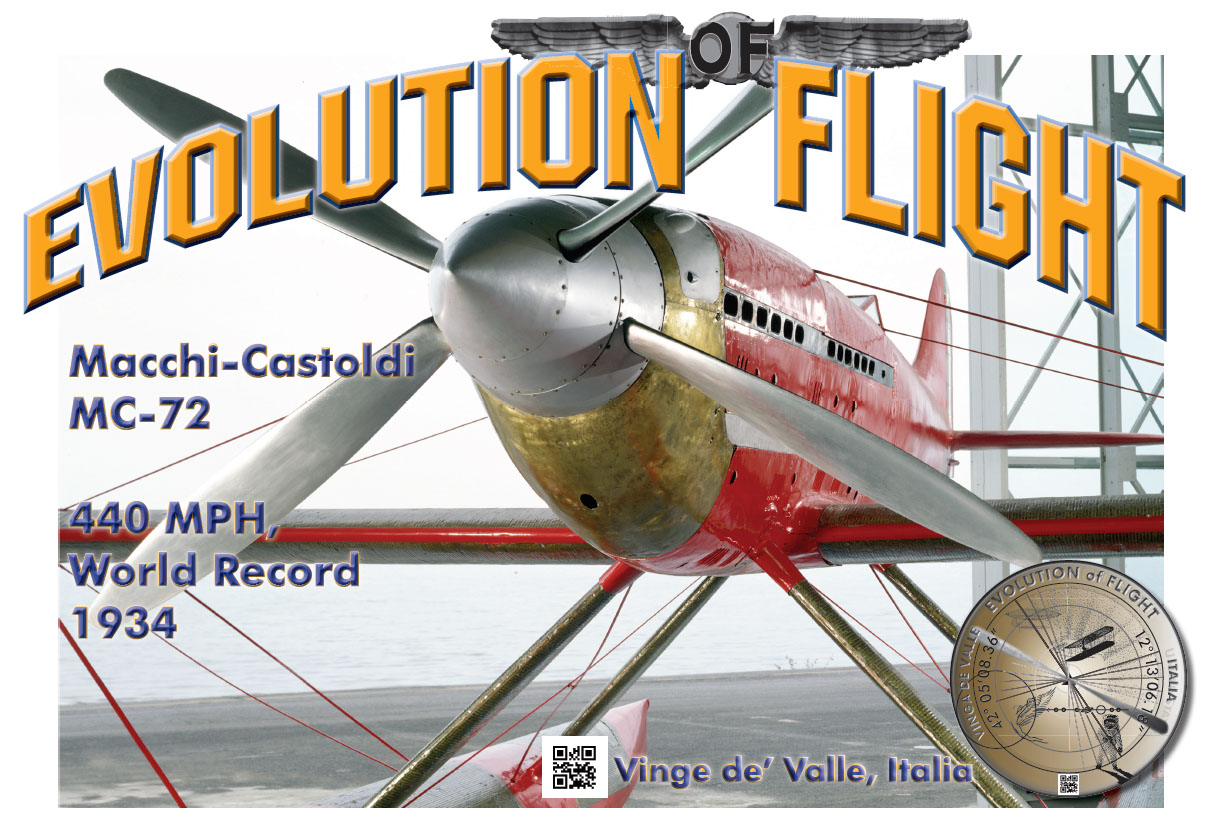
Contact: Dan Patterson 937-367-4639 email photopilot6795@earthlink.net

Macchi-Castoldi MC-72
Here on the shore of Lake Bracciano, about 30 miles outside of Rome,
the Italian Air Museum resides in the hangars of the World War One Italian seaplane base.
The Scarlet machine in front of you was built for the Schneider Trophy Races which ran in the late 1920s and early 1930s. These races were purely about speed and became a source of
National pride around the globe. The trophy is named the flying flirt.
The Italian government of Mussolini once told their pilots to win or don’t come back. That was in 1928 when the races were in the Chesapeake bay, hosted by the USA. That year the Italians won and reset the series, as after three consecutive wins the trophy would be won outright and kept the USA from winning the trophy. The USA then dropped out.
The Italian racing aircraft were a wide range of revolutionary designs which crossed the gamut of experimental thought, including this one on hydrofoils, a marine propeller in the back and a massive aerial propeller forward. Imagine the clutch required to transfer the power . . .
The MC-72 was built to defeat the British, who went on to win the trophy with the Supermarine S6b in 1932 which was the first airplane to exceed 400 mph.
There were three built, the sleek airframes designed by Mario Castoldi, built tightly around two Fiat AS-5 1500 horsepower engines, which were bolted together . . . each engine driving one of the propellers in opposite directions. A hollow driveshaft in the front engine contained the drive shaft from the rear engine. This is the only one left, the first two exploded and killed their pilots.
That kept the MC-72 from competing for the trophy.
The remaining airplane was finally tested in a wind tunnel at flight speed and it was discovered that it was so streamlined that it created a vacuum in the carburetor and as the fuel mixture accumulated, when it finally ignited, the airplane blew up. The fuel chemistry was altered to change the ignition temperature.
On October 23, 1934, Francesco Agello flew this airplane twice, each time to 440 mph, a world record for floatplanes that stands today. It never flew again.
Legend has it that Enzo Ferrari chose this color of red for his cars after that.